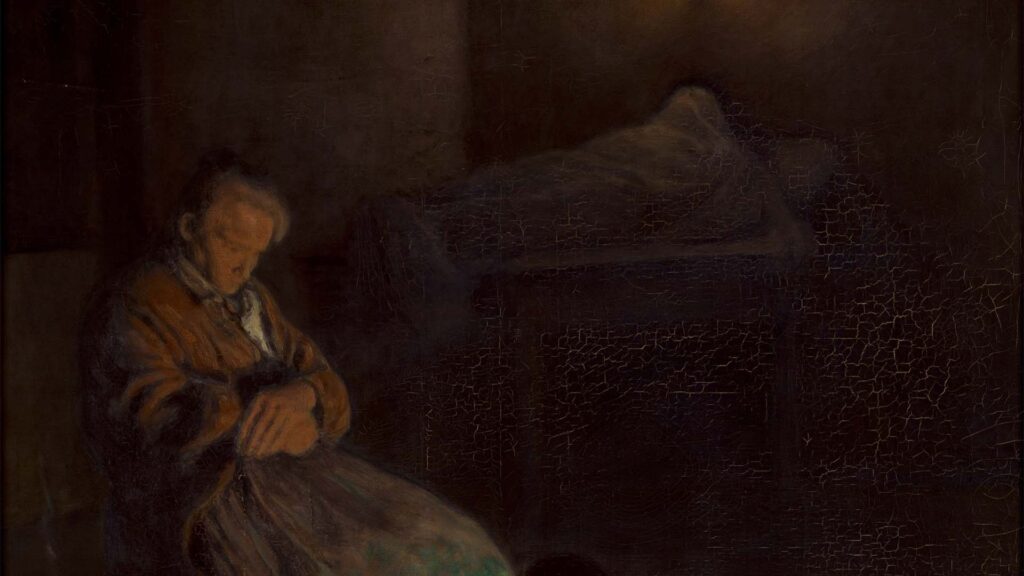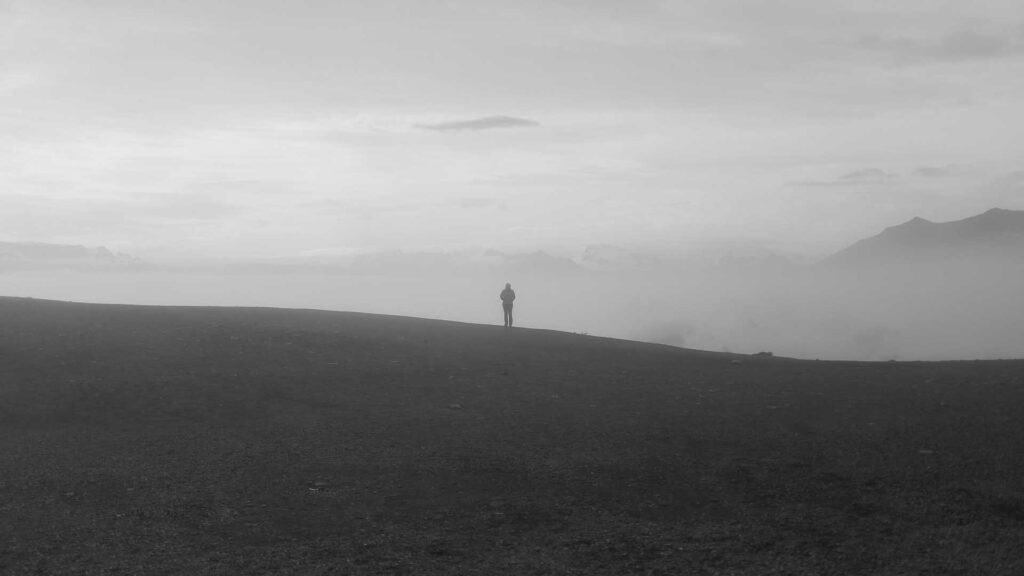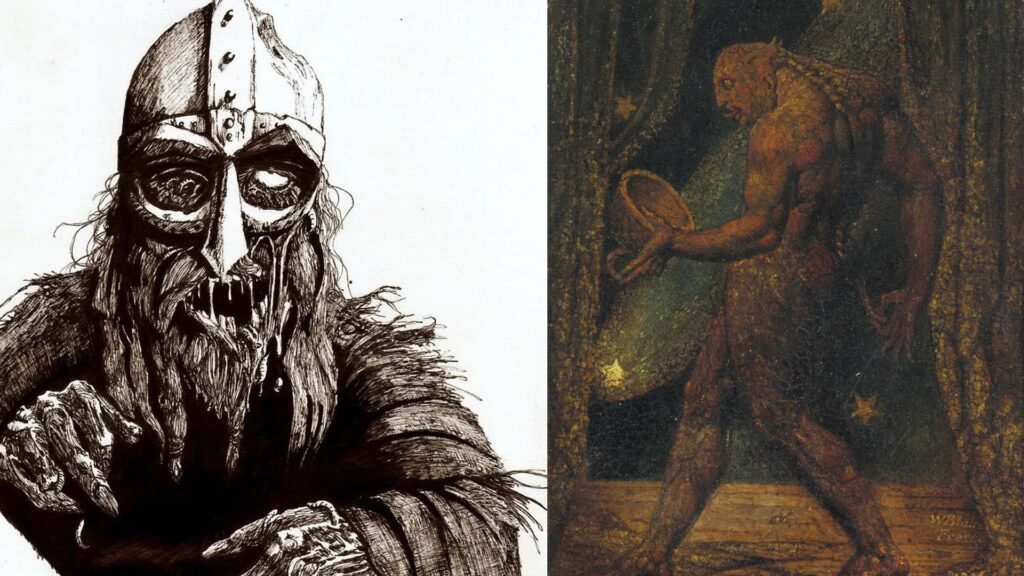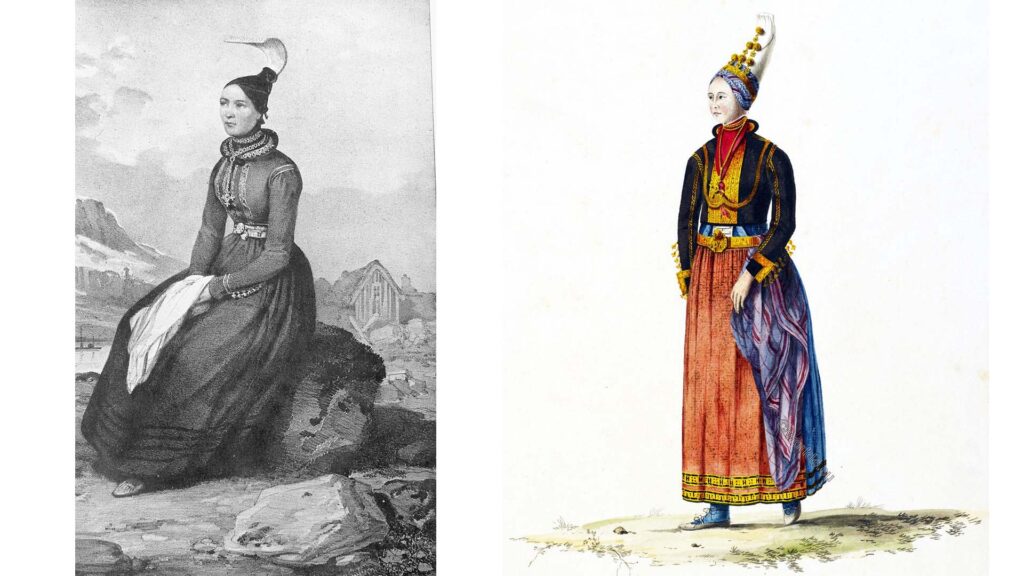Ghosts in Icelandic folktales are categorized into three categories:
Ghosts who either voluntarily or for some other reason, man-made or similar, wander after death.
Zombies are almost always dead people who are brought back to life by magic to be used for various reasons.
“Fylgjur,” or ghosts that attach themselves to a specific person.
Let’s check out the categories and learn more about Icelandic ghosts, specters and zombies.
Ghosts

It would seem most natural that those who were very fortunate when alive would return as ghosts after death. But, in actuality, there are many more stories about unfortunate people returning; newborn babies who were carried out to die right after entering this world, poor people, those who died horribly, evildoers, and those who loved their wealth more than anything.
Many stories are about those who came about out of anger to hurt those who hurt them in life. They usually threatened the bully that they would hunt them forever after death. Usually, not a long time would pass for such boys to kill themselves or die quickly to be able to take their revenge sooner. It is also common for lovers to promise to hunt each other as well. The Deacon in Myrká is a good example of a loved one returning to hunt his lover.
Hunting on New Year’s Eve
If you Visit Iceland in January or before New Year’s Eve, you might be able to experience many supernatural occurrences. Just don’t speak to them, you might lose your mind.
The dead will all rise from their graves on New Year’s Eve, and it’s called “the cemetery rises.” The dead go into the church in their shroud, hold a mass and then disappear. At the same time as the dead say their mass, the specters of those who will die in the coming year or be buried next to the church walk into it.
There’s a story of one young girl who decided to see if this was true on New Year’s Eve. She saw the specters enter the church, one after the other, and last in line was her fiancé. She got so scared that she passed out. When she woke up, she saw her own face enter the church. When the apparitions had been there for a while, they all disappeared again.
The next day, she told her family what she had seen; people believed it would come true. The following winter, her lover died, and she soon after.
There is also a belief that the first person buried in a cemetery will not rot and will always welcome those buried later. That person is called “The Watchman” and is supposed to watch over the graveyard.
Ghost stories to check out:
- Deacon of Myrká – an example of a story of love going on beyond death.
- White Cap – an example of a story of a ghost complaining about his treatment.
- “The Darkness is fun” – an example of a story of a newly dead person.
Útburður

We have already told you a little bit about the Icelandic child ghost “útburður” (literally “out-carried,” babies who were taken out to die of exposure). In the early days of Christianity in Iceland, all children who died before getting baptized were called “útburður.” Parents were not allowed to bury them in or near the churchyard.
However, a few centuries later, the word was only used about babies who were carried out by unmarried parents.
It is said that where children have been carried out to die, you can hear great wailing and crying, which is excruciating to hear. People do not just hear them but also see them. They walk on one knee and one elbow but still have their legs and hands crossed.
The útburður will try to mislead people, just like ghosts, especially during foggy nights. They try to run around people three times, and if they manage to do that, the person becomes insane.
They are not well-dressed; most of the time, they are seen wrapped in a rust brown rag, the rag their mother dressed them in when she carried it out.
Check out the folktale Dear Mother in the Pen, Pen as an example of an útburður-story.
Zombies – Uppvakningar

In Old Norse, zombies were called draugur, which in today’s language means ghost. Zombie stories are generally categorized with other ghost stories, but the main difference is that a living person brought them back. The person was usually a sorcerer, and they brought them back to do their bidding.
The famous zombie in the Icelandic sagas is from Grettis Saga. Grettir meets and fights Kárr the Old, a “draugur” protecting his burial mound, and Glámur, a revenant.
When Jón Árnason published his book on Icelandic folktales and legends, he said that waking up the dead was so rare in his time that people could not agree on which method they should use if they wanted to do so.
How to create a zombie
Some say that to bring a zombie back, you must take one of the dead person’s bones and enlarge it with magic, so it becomes a man. Then you can send it to whomever you want to scare. If the person, who receives the zombie, is knowledgeable enough that they can pick out the magical bone or mention the zombie’s name, they become powerless.
However, life is never so simple that this is the only thing you need to do, or so says Jón Árnason. You will have to do this in the night when Friday becomes Saturday and also make sure it is between the 18th and 19th or the 28th and 29th of the month. The day before the whole ritual is performed, you must reverse the lord’s prayer and write it down with your own blood, taken from the left hand. You will also need to write a magical rune onto a cylinder, take it to the cemetery at midnight and choose a grave to your liking.
The cylinder is laid down on the grave and rolled back and forth while reading the Lord’s Prayer backward from the paper. Additionally, you will need to enchant various magical poems, which few know. The grave gradually becomes restless, and the sorcerer starts hallucinating while the ghost creeps up. It takes time because zombies are desperate not to move and say: “Let me be still.” But the sorcerer must not give in to that prayer nor allow himself to be scared by the hallucinations. The sorcerer must continue mutter his incantations in earnest and roll the cylinder until the zombie has half risen.
At the same time, however, care must be taken to ensure that the soil does not fall out of the grave when it starts to loosen. That soil will not go into the grave again, no matter how hard you try.
When the ghost is halfway up, he should be asked two questions, not three, because otherwise, it will disappear back down before the trinity. The questions used to be: 1. who he was in life, and 2. how great a man he was. Others say there was only one question: “How old are you?”
If the ghost claims to have been an average person or more. In that case, it is not advisable to continue because the sorcerer will have to fight with him later, and zombies are powerful.
Check out The Sorcerers in the Westman Islands as an example of an Icelandic zombie story.
In our Reykjavik Folklore Tour, we teach you to create a zombie! But we must ask you to use that power wisely.
Fylgja

In the 19th century, most people believed “fylgjur” (ghosts who attached themselves to a specific person) to be ghosts or zombies. However, in ancient times, “fylgjur” usually appeared as spiritual beings called “dísir.” Dísir is a difficult word to translate into English. It can mean an elf queen, a goddess like Venus, or a nymph. But in this case, it is more like a guardian angel.
The guardian follows a specific person, protects them, and brings them luck and good fortune. It could be easy to imagine that this guardian angel was, in fact, happiness, luck, and destiny. There are stories of people having their own guardians, as well as whole families. Sometimes, when a person died, the fylgja tried to find another close relative to follow or that the dying person would give it to someone else. But it was more common that people believed the fylgja would die with its person.
Origin of Fylgja
But from where does fylgja come? The common belief was that fylgjur followed people from birth. Fylgja also means placenta, and people believed that a part of the baby’s soul was trapped in it. Placentas were considered sacred, and burying them underneath the mother’s bedroom door threshold was customary. If the placenta was thrown out after birth, evil spirits could enter it, harming the child. Scavengers could also eat it; thus, children would not get a guardian. Having no guardian was believed to be the same as having no shadow.
When the placenta was buried underneath the door threshold, the fylgja would take on the form of an animal the child most resembled, both in temperament and appearance. It would take on the form of a bear, eagle, wolf, ox, boar, lion, or leopard. The fylgja of treacherous men, pranksters, and sorcerers were usually in the shape of a vixen or fox. However, virtuous women’s guardians were in the form of swans.
By the 19th century, people burnt the placenta in most cases, so fewer and fewer people had a “fylgja.” People also seemed not to want to have one. It could be just as much of a curse to have it as not to have it.
Later, the female ghosts attached themselves to people, families, or even towns and were called Skotta (Tail). They got the name due to their hat, like the old Icelandic headwear worn with faldbúningur. However, instead of having the headwear turn forward like was custom, the ghost had it on backward and let it hang down their back, like a tail (skott). It was usually rust red in color, their socks red, and they sucked their fingers.
The male ghosts were called Móri (rust brown), after the color of their clothes. They wore rust brown jumpers or smocks, a large-brimmed hat with a low crown, or a balaclava, but they put the whole head through the face opening and let it hang back onto their back. Some had a goad.
Check out Móhúsa-Skotta as an example of a Skotta and Móri ghost story.
Please signup HERE for our newsletter for more fun facts and information about Iceland!








